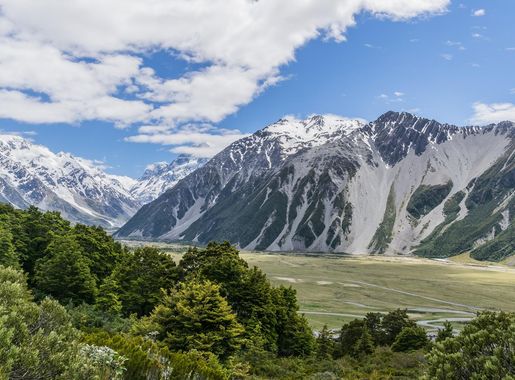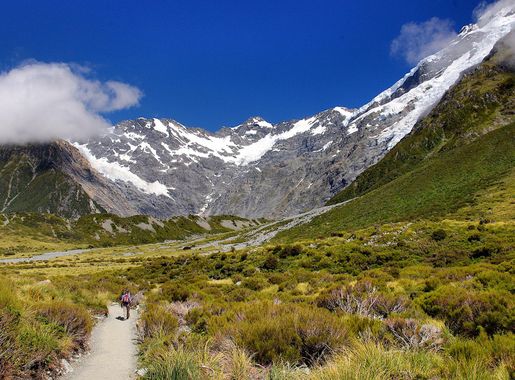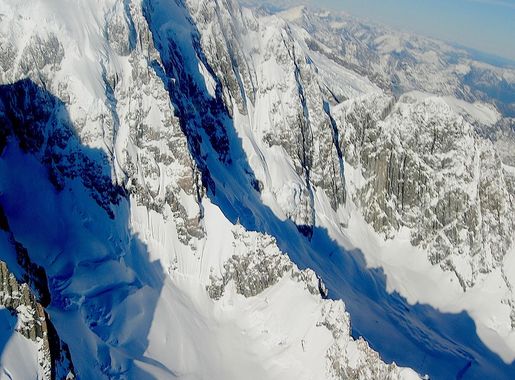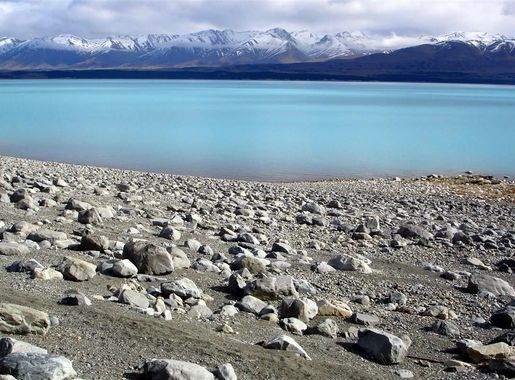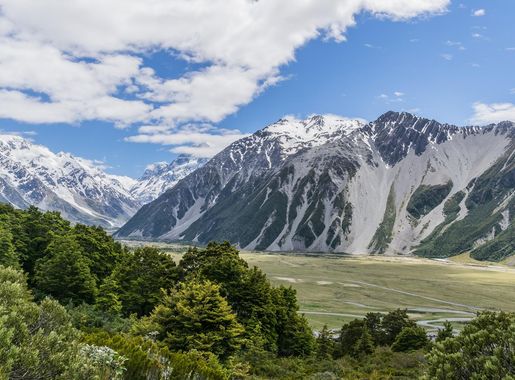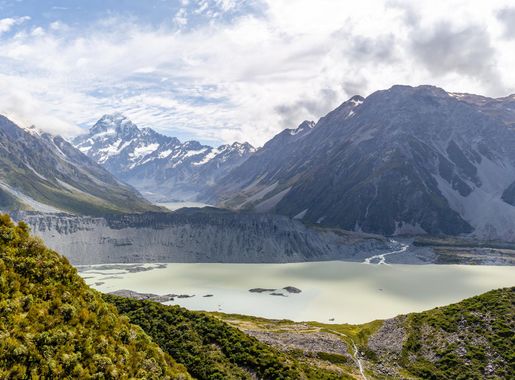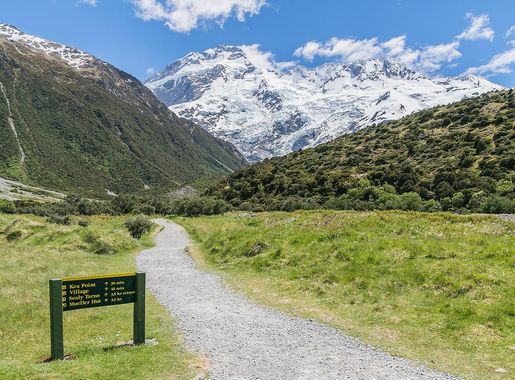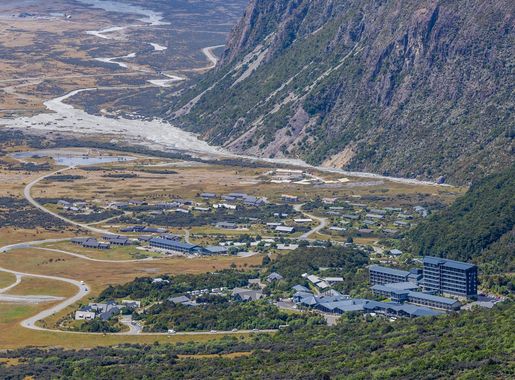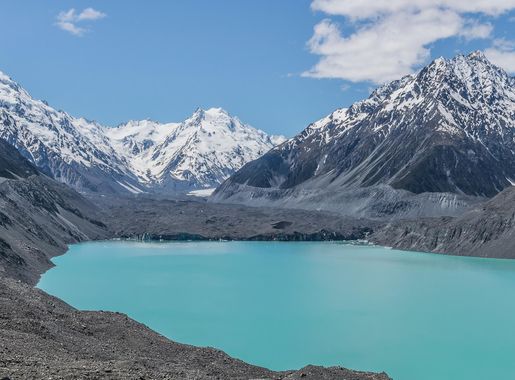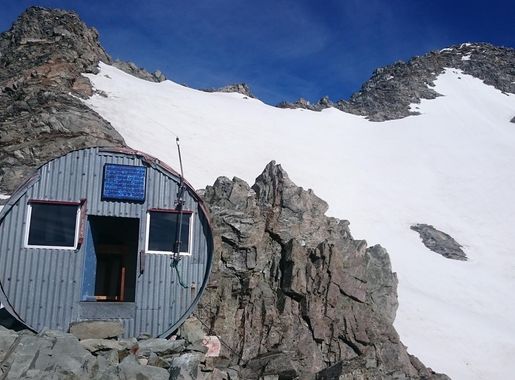
The Majestic Heights of Mount Cook National Park
Discover the awe-inspiring beauty and adventure of Mount Cook National Park, New Zealand's premier destination for mountaineering, hiking, and natural wonders.
Mount Cook National Park, also known as Aoraki/Mount Cook National Park, is a place where nature's splendor unfolds in grand style. Nestled in the Southern Alps of New Zealand, this park is a haven for hikers, climbers, and nature lovers seeking stunning views and thrilling adventures. Aoraki/Mount Cook, the highest peak in New Zealand, stands tall at 3,724 meters. The park is home to 19 peaks over 3,000 meters, making it a prime destination for mountaineers. The landscape is dotted with glaciers, including the mighty Tasman Glacier, which is the longest in the country. Walking trails range from short, easy strolls to challenging multi-day hikes, offering something for everyone. The natural beauty of the park is complemented by its rich flora and fauna. Alpine flowers, such as the Mount Cook lily, bloom in vibrant colors, while the kea, an alpine parrot, entertains visitors with its curious nature. The park also offers opportunities for stargazing, as it is part of the Aoraki Mackenzie International Dark Sky Reserve, one of the clearest places to observe the night sky. Whether you're scaling peaks, exploring glacier lakes, or simply soaking in the serene environment, Mount Cook National Park promises an unforgettable experience. With its dramatic landscapes and boundless recreational opportunities, it is a destination that captures the heart and soul of every visitor.
Local tips in Mount Cook National Park
- Check weather conditions before heading out; the weather can change rapidly in the mountains.
- Visit the Sir Edmund Hillary Alpine Centre for an insight into the region’s history and mountaineering.
- Bring layers of clothing, as temperatures can vary greatly throughout the day.
- Book accommodation in advance, especially during the peak tourist season.
- Take a guided tour if you're not an experienced mountaineer.
The Majestic Heights of Mount Cook National Park
Mount Cook National Park, also known as Aoraki/Mount Cook National Park, is a place where nature's splendor unfolds in grand style. Nestled in the Southern Alps of New Zealand, this park is a haven for hikers, climbers, and nature lovers seeking stunning views and thrilling adventures. Aoraki/Mount Cook, the highest peak in New Zealand, stands tall at 3,724 meters. The park is home to 19 peaks over 3,000 meters, making it a prime destination for mountaineers. The landscape is dotted with glaciers, including the mighty Tasman Glacier, which is the longest in the country. Walking trails range from short, easy strolls to challenging multi-day hikes, offering something for everyone. The natural beauty of the park is complemented by its rich flora and fauna. Alpine flowers, such as the Mount Cook lily, bloom in vibrant colors, while the kea, an alpine parrot, entertains visitors with its curious nature. The park also offers opportunities for stargazing, as it is part of the Aoraki Mackenzie International Dark Sky Reserve, one of the clearest places to observe the night sky. Whether you're scaling peaks, exploring glacier lakes, or simply soaking in the serene environment, Mount Cook National Park promises an unforgettable experience. With its dramatic landscapes and boundless recreational opportunities, it is a destination that captures the heart and soul of every visitor.
When is the best time to go to Mount Cook National Park?
Iconic landmarks you can’t miss
Hooker Valley track
Experience the breathtaking beauty of the Hooker Valley Track in Mount Cook National Park, a must-visit hiking destination in New Zealand.
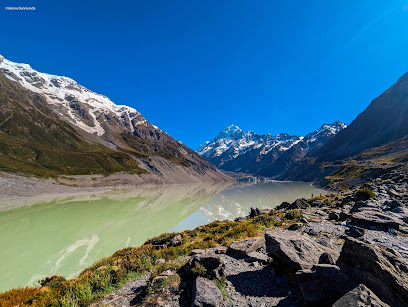
Aoraki/Mount Cook National Park
Explore the majestic landscapes of Aoraki/Mount Cook National Park, New Zealand's stunning alpine paradise filled with adventure and natural beauty.

The Hermitage Hotel
Discover unparalleled luxury and breathtaking views at The Hermitage Hotel in Aoraki/Mount Cook National Park, New Zealand's stunning natural gem.
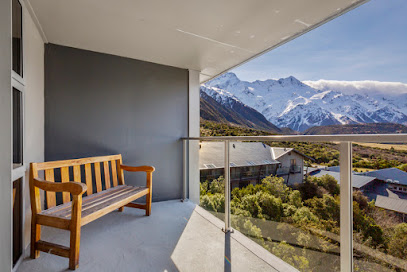
Lake Matheson Walk
Discover the stunning beauty of Lake Matheson Walk, a breathtaking hiking area in New Zealand known for its mirror-like lake reflections and serene landscapes.
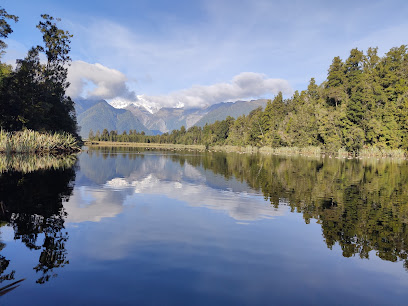
University of Canterbury Mt John Observatory
Experience the cosmic wonders at the University of Canterbury Mt John Observatory, a top destination for stargazing in Tekapo, New Zealand.
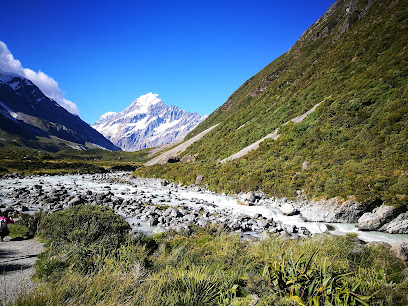
Clay Cliffs
Discover the stunning Clay Cliffs in New Zealand's South Island, a breathtaking natural wonder perfect for photography and outdoor adventures.
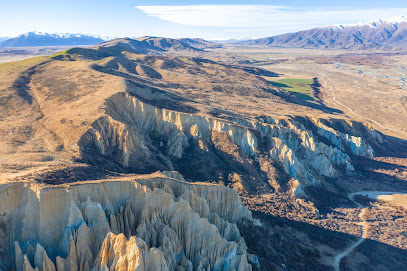
Dark Sky Project
Discover the beauty of the cosmos at the Dark Sky Project in Lake Tekapo, NZ, where celestial wonders meet exceptional dining and shopping.
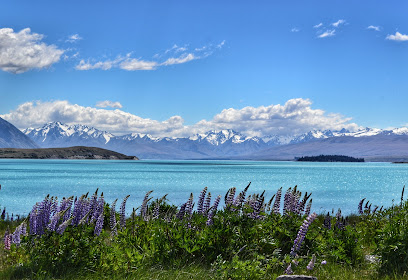
Aoraki Mount Cook Village
Experience the breathtaking beauty of Aoraki Mount Cook Village, a gateway to New Zealand's stunning Southern Alps and outdoor adventures with unforgettable landscapes.
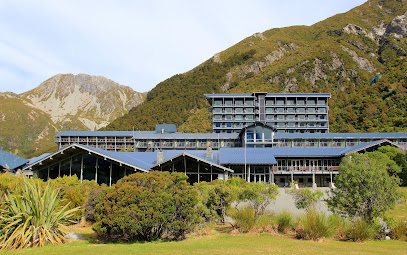
Tasman Glacier Viewpoint
Explore the stunning Tasman Glacier Viewpoint, a serene spot in Aoraki/Mount Cook National Park with breathtaking views of New Zealand's natural beauty.
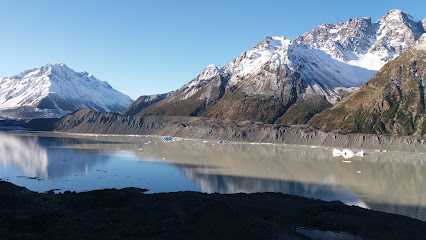
Aoraki/Mount Cook National Park Visitor Centre
Discover the gateway to adventure in Aoraki/Mount Cook National Park at the Visitor Centre, where knowledge meets stunning landscapes.
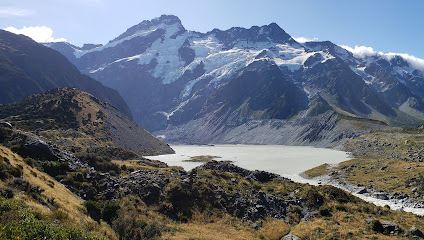
Hooker Valley Track
Explore the breathtaking landscapes of the Hooker Valley Track, an iconic hiking adventure in Aoraki/Mount Cook National Park, New Zealand.
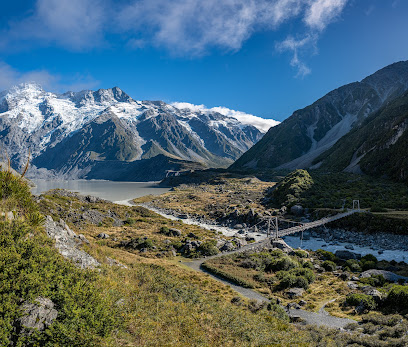
Glentanner Park Centre (Mount Cook)
Experience unparalleled outdoor adventures and breathtaking views at Glentanner Park Centre, your gateway to the stunning Mount Cook region.
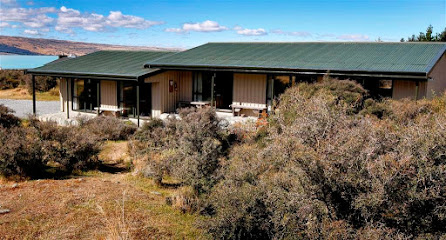
Aoraki / Mount Cook
Discover the breathtaking beauty of Aoraki / Mount Cook, New Zealand's highest peak, with epic hikes, stunning vistas, and outdoor adventures.
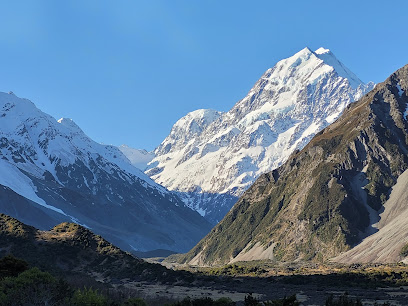
Tapataia Mahaka Peter's Lookout (Lake Pukaki Viewpoint) (Mount Cook Road)
Discover stunning vistas and breathtaking landscapes at Tapataia Mahaka Peter's Lookout on Mount Cook Road, a must-see destination for every traveler.
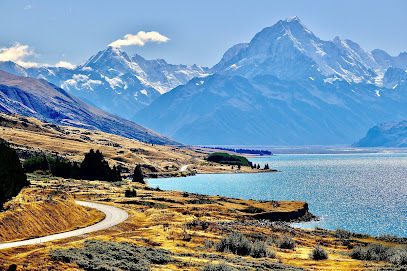
The Old Mountaineers Cafe
Discover the warmth of The Old Mountaineers Cafe in Aoraki/Mount Cook National Park, offering local cuisine and stunning views in a cozy setting.
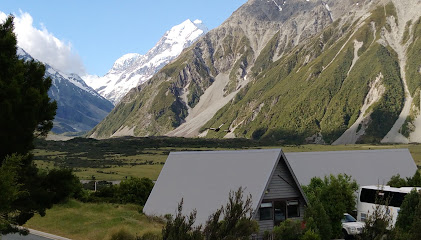
Unmissable attractions to see
Dark Sky Project
Discover the wonders of the universe at the Dark Sky Project in Lake Tekapo, a premier destination for stargazing and local cuisine amidst breathtaking landscapes.
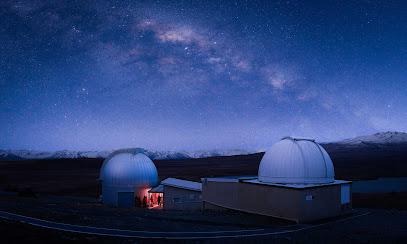
University of Canterbury Mt John Observatory
Explore the cosmos at Mt John Observatory, a premier stargazing destination in the heart of New Zealand's stunning landscapes.
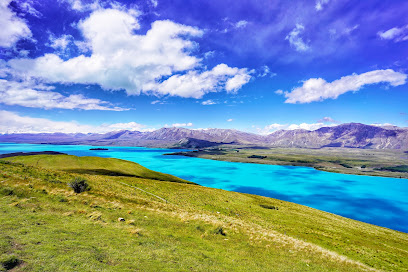
Clay Cliffs
Experience the breathtaking beauty of Clay Cliffs in Omarama, where stunning geological formations meet the serene landscapes of New Zealand.
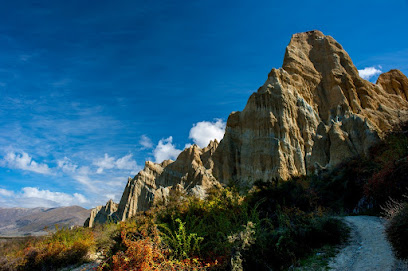
Franz Josef Glacier Guides
Discover the breathtaking beauty of Franz Josef Glacier with unforgettable tours and experiences in New Zealand's stunning landscapes.
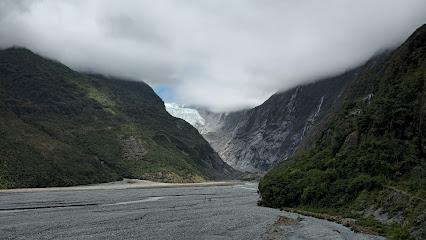
Aoraki/Mount Cook National Park Visitor Centre
Explore the breathtaking Aoraki/Mount Cook National Park Visitor Centre, your gateway to New Zealand's stunning alpine landscapes and rich cultural heritage.
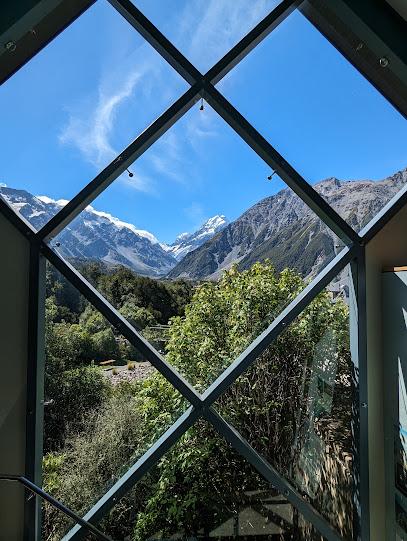
Hooker Valley Track
Experience the stunning landscapes of the Hooker Valley Track, a premier hiking destination in Aoraki/Mount Cook National Park, New Zealand.
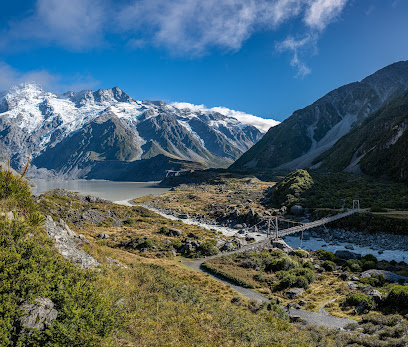
Tapataia Mahaka Peter's Lookout (Lake Pukaki Viewpoint) (Mount Cook Road)
Discover breathtaking views at Tapataia Mahaka Peter's Lookout, where Lake Pukaki meets the majestic Southern Alps in New Zealand.
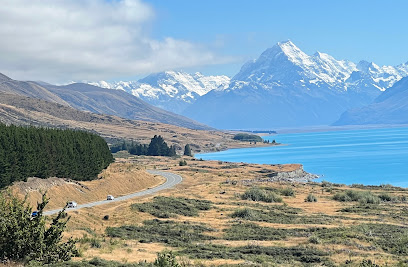
The Old Mountaineers Cafe
Experience the perfect blend of delicious cuisine and stunning views at The Old Mountaineers Cafe in Aoraki/Mount Cook National Park.

Kea Point
Discover the breathtaking views at Kea Point in Aoraki Mount Cook National Park, a must-visit for nature lovers and adventure seekers in New Zealand.
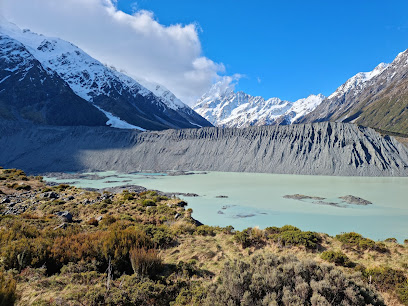
Tekapo Stargazing
Experience the breathtaking night skies of Lake Tekapo with Tekapo Stargazing, where the universe unfolds in a dazzling display of stars and celestial wonders.
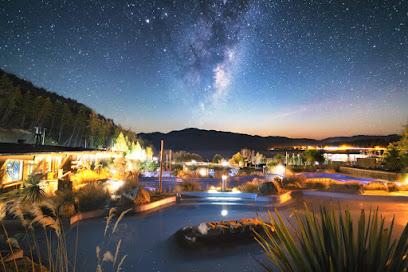
Air Safaris Tekapo
Discover the breathtaking beauty of Lake Tekapo from above with unforgettable aerial tours at Air Safaris Tekapo in New Zealand.
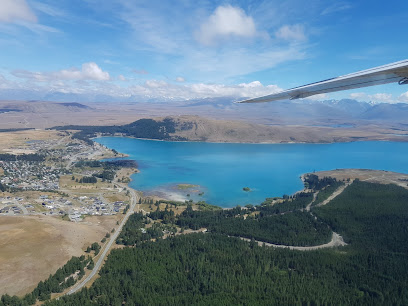
The Helicopter Line Franz Josef Heli Hike
Soar above the stunning Franz Josef Glacier and embark on a thrilling hike through New Zealand's breathtaking landscapes with The Helicopter Line.
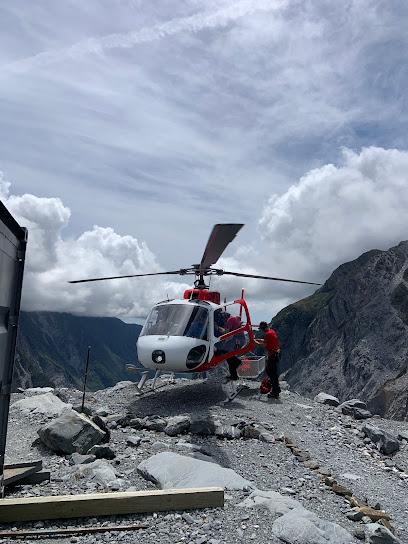
Roundhill Ski Area
Explore the pristine slopes and stunning vistas of Roundhill Ski Area, a premier ski resort in the heart of New Zealand's Southern Alps.

Mueller Hut Route
Discover the stunning landscapes and breathtaking views along the iconic Mueller Hut Route in Aoraki/Mount Cook National Park, New Zealand.

Cowans Hill Walkway
Explore the breathtaking Cowans Hill Walkway near Lake Tekapo, a hiking paradise with stunning views and ideal stargazing opportunities.
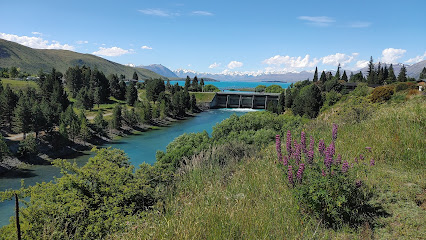
Essential places to dine
Kohan Restaurant
Experience exquisite Japanese cuisine at Kohan Restaurant with breathtaking views of Lake Tekapo's stunning landscapes.
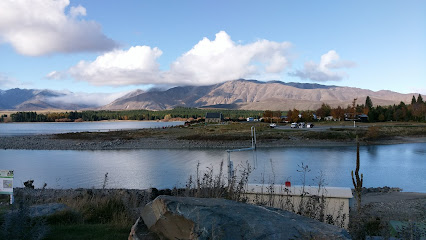
Mackenzies Cafe Bar & Grill
Experience exceptional local cuisine with stunning views at Mackenzies Cafe Bar & Grill in Lake Tekapo.

Matheson Cafe
Experience breathtaking views at Matheson Cafe while enjoying delicious local cuisine near Lake Matheson.
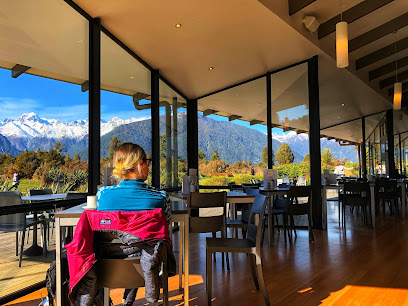
Blue Lake Eatery & Bar
Experience culinary delights at Blue Lake Eatery & Bar with stunning views in Lake Tekapo - perfect for food lovers and nature enthusiasts alike.
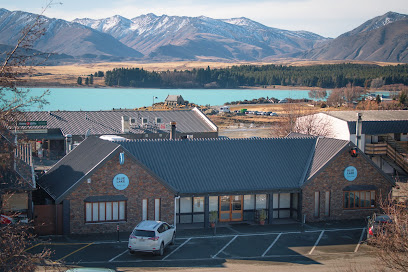
Ministry of Works Bar & Eatery
Discover Twizel's vibrant culinary scene at the Ministry of Works Bar & Eatery, where great food meets live music in an inviting atmosphere.
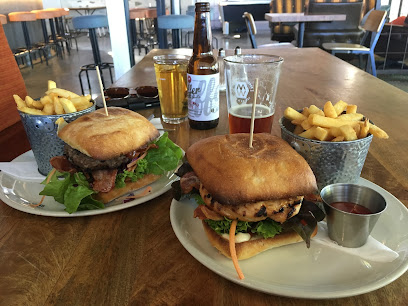
FishTail restaurant and bar
Discover authentic Indian flavors at FishTail Restaurant and Bar in Twizel – a culinary gem offering delightful dishes in a vibrant setting.
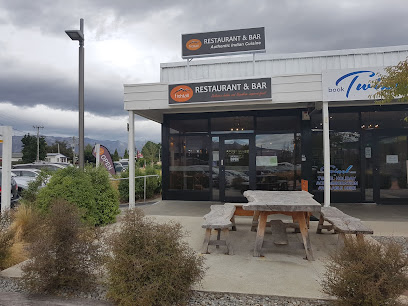
Top Hut Bar & Bistro
Discover exceptional flavors at Top Hut Bar & Bistro in Twizel - where local ingredients meet warm hospitality.

Cook Saddle Cafe & Saloon
Experience delightful dining at Cook Saddle Cafe & Saloon in Fox Glacier – where local flavors meet stunning landscapes.

Jack Rabbit
Discover Jack Rabbit: A top-rated café and brunch spot in Lake Tekapo with breathtaking views and delicious local flavors.
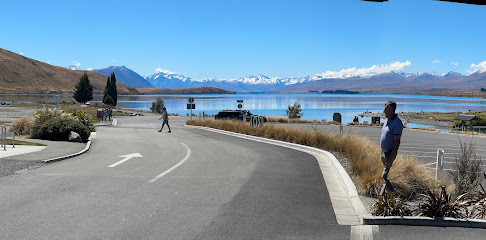
Dark Sky Diner
Discover exquisite cuisine and stunning night skies at Dark Sky Diner in Lake Tekapo - where nature meets gastronomy.
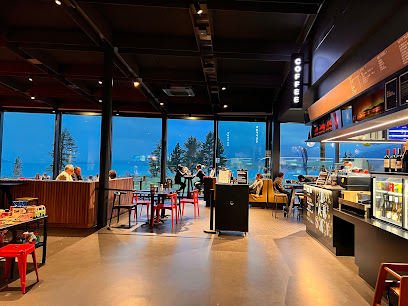
Jade Palace Resteraunt
Experience authentic Chinese cuisine at Jade Palace Restaurant in Lake Tekapo amidst breathtaking landscapes.
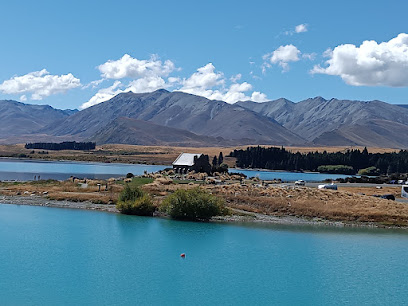
Chamois Bar & Grill
Experience exquisite dining at Chamois Bar & Grill amidst breathtaking landscapes in Aoraki/Mount Cook National Park.
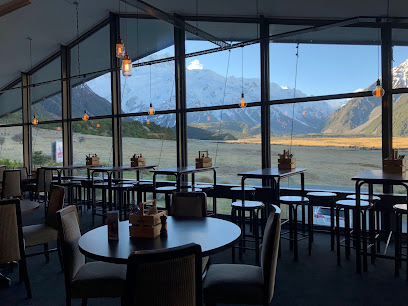
Betsey Jane Eatery & Bar
Experience culinary excellence at Betsey Jane Eatery & Bar in Fox Glacier, where local flavors meet stunning scenery.
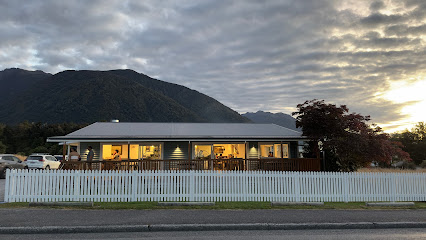
Mint Folk & Co
Experience exceptional cuisine at Mint Folk & Co in Twizel - where local flavors meet warm hospitality.
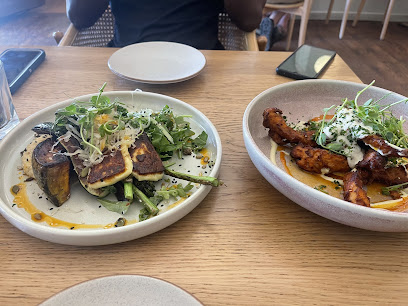
TLV Restaurant & Bar
Experience unforgettable dining at TLV Restaurant & Bar in Lake Tekapo - where local flavors meet stunning scenery.
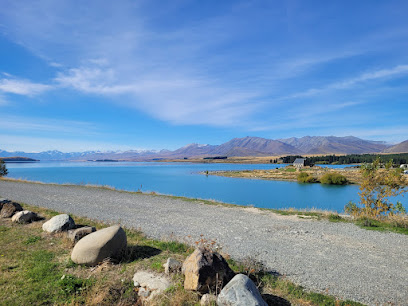
Markets, malls and hidden boutiques
Hooker Valley track
Discover the breathtaking landscapes of Hooker Valley Track, a premier hiking destination in Mt. Cook National Park, New Zealand.
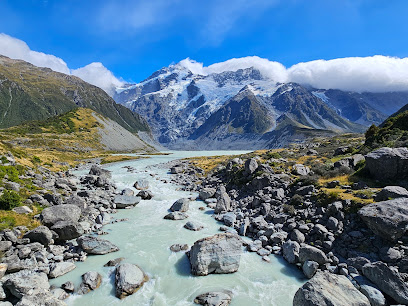
Aoraki/Mount Cook National Park
Explore the breathtaking Aoraki/Mount Cook National Park, a paradise of towering peaks, pristine lakes, and unforgettable alpine adventures.
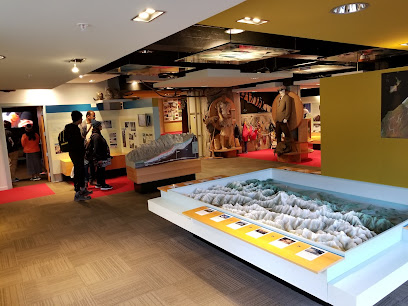
Mt Cook Alpine Salmon Shop
Experience the finest alpine salmon at Mt Cook Alpine Salmon Shop, a gourmet destination with stunning views of Lake Pukaki and the Southern Alps.
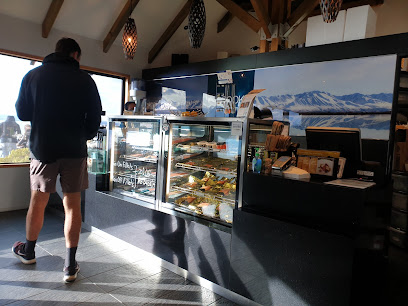
Aoraki Mount Cook Village
Explore the stunning landscapes of Aoraki Mount Cook Village, your gateway to New Zealand's highest peak and breathtaking alpine adventures.

Aoraki/Mount Cook National Park Visitor Centre
Explore the stunning Aoraki/Mount Cook National Park Visitor Centre, your gateway to New Zealand's breathtaking landscapes and adventure.
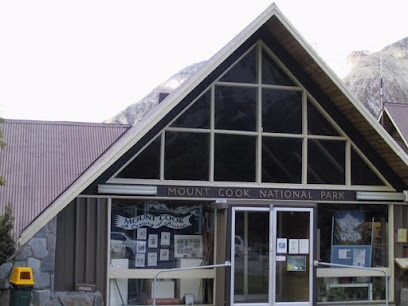
Hooker Valley Track
Discover the breathtaking landscapes of Hooker Valley Track, a stunning hiking destination in Aoraki/Mount Cook National Park, New Zealand.
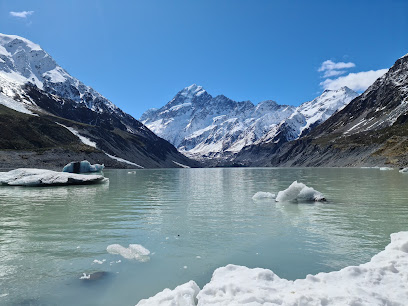
The Old Mountaineers Cafe
Experience the beauty of Aoraki/Mount Cook with delicious meals at The Old Mountaineers Cafe, a perfect retreat for travelers in New Zealand's stunning landscapes.
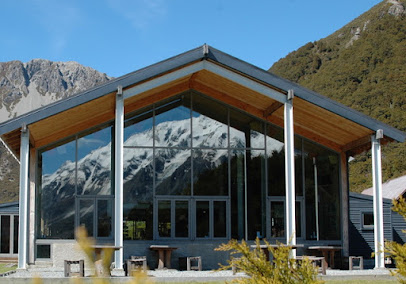
Four Square Twizel
Explore the essence of Twizel at Four Square, where local flavors and friendly service come together in a delightful grocery shopping experience.
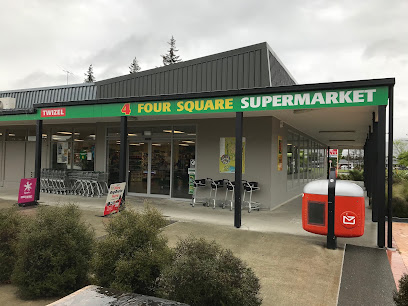
Kea Point
Discover the breathtaking views of Mount Cook and the Southern Alps at Kea Point, an unforgettable scenic spot in New Zealand's Aoraki Mount Cook National Park.
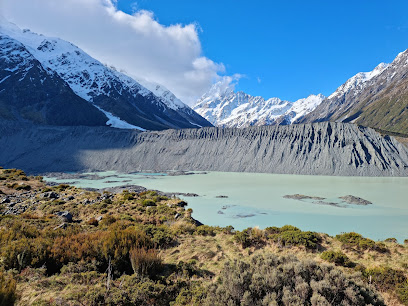
Three Creeks, Vintage Garage Decor
Explore the unique charm of Three Creeks Vintage Garage Decor, a treasure trove of eclectic vintage finds and quirky gifts in Burkes Pass, New Zealand.
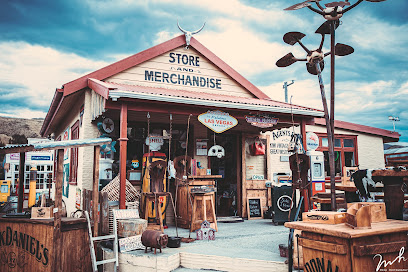
The Tin Shed
Discover the charm of New Zealand at The Tin Shed, your go-to destination for unique souvenirs, clothing, and local culture.
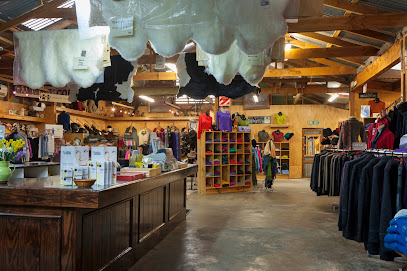
Glacier Explorers
Experience the breathtaking beauty of Aoraki/Mount Cook's glaciers at Glacier Explorers, where adventure meets stunning landscapes.
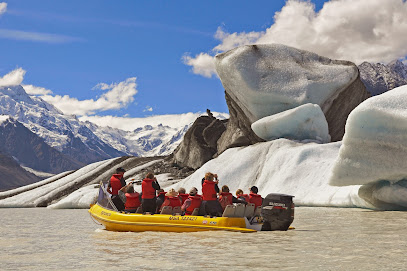
Sir Edmund Hillary Cafe & Bar
Experience the perfect blend of culinary delights and breathtaking views at Sir Edmund Hillary Cafe & Bar in Aoraki Mount Cook National Park.

Red Tarns Viewpoint
Explore the breathtaking beauty of the Red Tarns Viewpoint in Aoraki/Mount Cook National Park, a must-visit scenic spot for nature lovers.
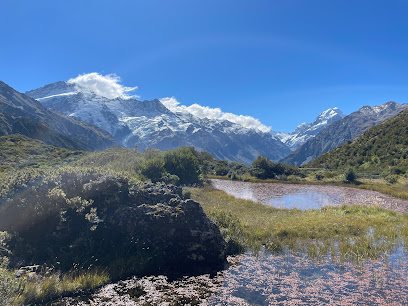
Mint Boutique
Explore Mint Boutique in Fairlie for unique clothing and accessories that reflect New Zealand's vibrant style and local craftsmanship.
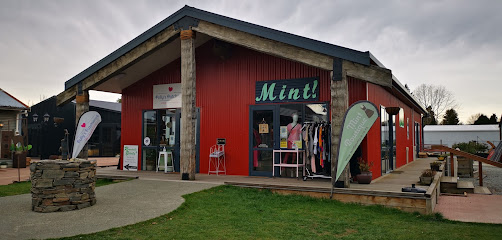
Essential bars & hidden hideouts
The Hermitage Hotel
Discover the breathtaking beauty of Aoraki/Mount Cook National Park from the comfort of The Hermitage Hotel, your gateway to alpine adventures.
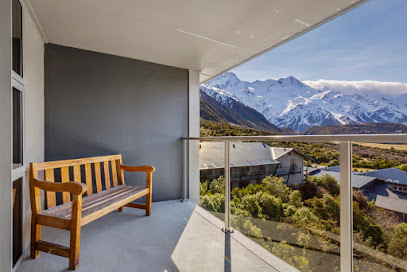
Aoraki Mount Cook Village
Discover the breathtaking beauty of Aoraki Mount Cook Village, the gateway to New Zealand's highest peak and stunning alpine adventures.

Ministry of Works Bar & Eatery
Discover the heart of Twizel at the Ministry of Works Bar & Eatery, where great food meets live music in a vibrant, welcoming atmosphere.
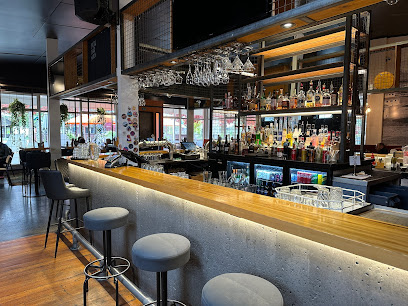
The Old Mountaineers Cafe
Discover the culinary delights and breathtaking views at The Old Mountaineers Cafe in Aoraki/Mount Cook National Park, a must-visit for tourists.
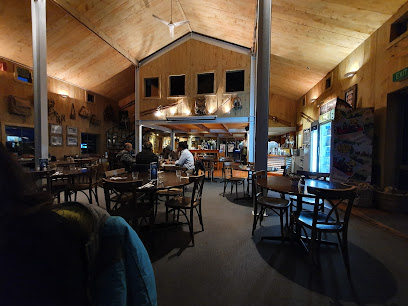
Mt Cook Lodge & Motels
Discover the breathtaking beauty of Aoraki/Mount Cook National Park while enjoying a comfortable stay at Mt Cook Lodge & Motels, your gateway to adventure.

Aoraki Court
Experience the beauty of Aoraki/Mount Cook National Park with a comfortable stay at Aoraki Court, the perfect base for adventure and relaxation.
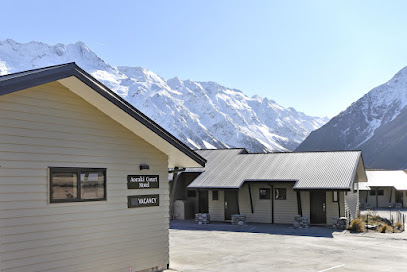
Haka House Aoraki Mt Cook
Experience the beauty of Aoraki Mt Cook at Haka House, your ideal base for adventure and relaxation in New Zealand's stunning landscapes.

Cook Saddle Cafe & Saloon
Discover the flavors of New Zealand at Cook Saddle Cafe & Saloon, a charming eatery in the heart of Fox Glacier with stunning views and warm hospitality.
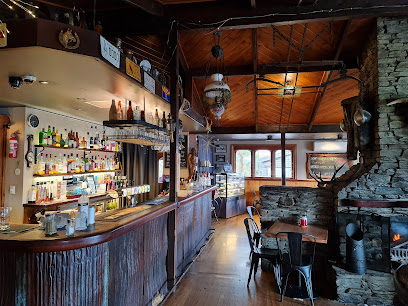
Chamois Bar & Grill
Experience exquisite dining at Chamois Bar & Grill, where local flavors meet breathtaking views in Aoraki/Mount Cook National Park.
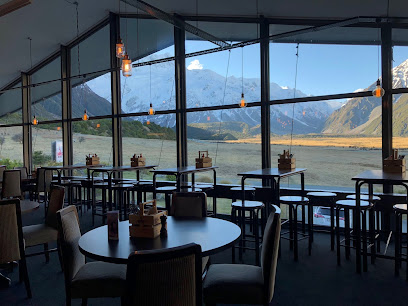
Betsey Jane Eatery & Bar
Indulge in a unique dining experience at Betsey Jane Eatery & Bar, where local flavors meet contemporary cuisine in stunning Fox Glacier.
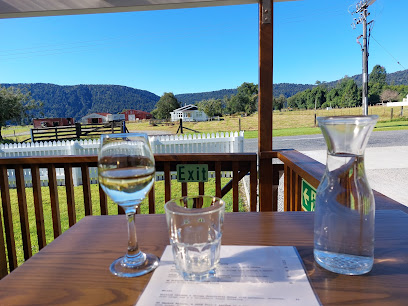
The White Pub Cafe & Bar
Experience the charm of The White Pub Cafe & Bar in Fox Glacier, where local flavors meet a cozy atmosphere for an unforgettable dining experience.

Sir Edmund Hillary Cafe & Bar
Experience the stunning views and delectable dishes at Sir Edmund Hillary Cafe & Bar in Aoraki Mount Cook National Park, New Zealand.

Tasman Delta Cafe
Experience the perfect blend of delicious cuisine and stunning mountain views at Tasman Delta Cafe in Aoraki/Mount Cook National Park.
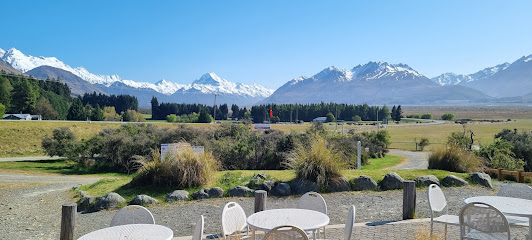
Alpine Restaurant
Experience the perfect blend of breathtaking views and delectable buffet dining at the Alpine Restaurant in Aoraki Mount Cook National Park.
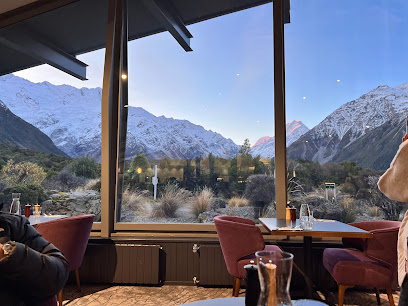
Mt Cook Lakeside Retreat, High Country Estate | Luxury Villas | Weddings | Restaurant
Discover the ultimate luxury retreat at Mt Cook Lakeside, where breathtaking views and fine dining meet for an unforgettable experience.
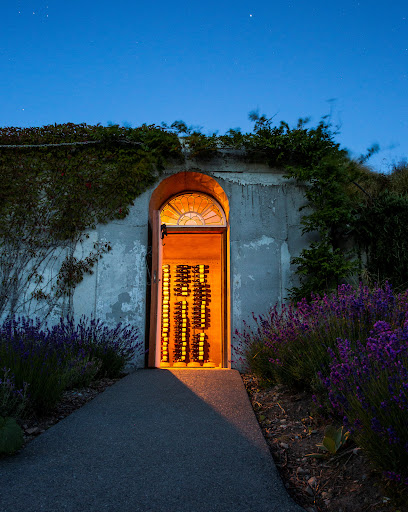
Local Phrases about Mount Cook National Park
-
- HelloKia ora
[kee-ah oh-rah] - GoodbyeHaere rā
[high-reh rah] - YesĀe
[eye] - NoKāo
[kah-oh] - Please/You're welcomeWhakawhetai
[fah-kah-feh-tie] - Thank youKia ora
[kee-ah oh-rah] - Excuse me/SorryAroha mai
[ah-raw-hah my] - How are you?Kei te pēhea koe?
[key teh pay-hah ko-eh] - Fine. And you?Kei te pai. Ā, koe?
[key teh pie. eye, ko-eh?] - Do you speak English?Kāore koe e kōrerotia i te reo Pākehā?
[kah-oh-reh ko-eh eh kaw-reh-raw-tee-ah ee teh reh-oh pah-keh-hah] - I don't understandKaore au i te mohio
[kah-oh-reh ow ee teh moh-hee-oh]
- HelloKia ora
-
- I'd like to see the menu, pleaseMe āwhina ki te titiro i te menewa, tēnā
[meh ah-fee-nah kee teh tee-tee-row ee teh meh-neh-wah, teh-nah] - I don't eat meatKāore au e kai i te mīti
[kah-oh-reh ow eh kai ee teh mee-tee] - Cheers!Kia ora!
[kee-ah oh-rah] - I would like to pay, pleaseKaore au e hoko, tēnā
[kah-oh-reh ow eh haw-kaw, teh-nah]
- I'd like to see the menu, pleaseMe āwhina ki te titiro i te menewa, tēnā
-
- Help!Āwhina!
[ah-fee-nah] - Go away!Haere atu!
[high-reh ah-too] - Call the Police!Karanga ki te Pirihimana!
[kah-rah-ngah kee teh pee-ree-hee-mah-nah] - Call a doctor!Karanga ki te Rata!
[kah-rah-ngah kee teh rah-tah] - I'm lostI wareware au
[ee wah-reh-wah-reh ow] - I'm illKa ngaro ahau
[kah ngah-roh ah-haw]
- Help!Āwhina!
-
- I'd like to buy...Me hoko...
[meh haw-kaw] - I'm just lookingKei te titiro anō au
[key teh tee-tee-row ah-noh ow] - How much is it?He aha te utu?
[heh ah-hah teh oo-too] - That's too expensiveHe roa rawa te utu
[heh raw-ah raw-wah teh oo-too] - Can you lower the price?Ka taea e koe te whakaiti i te utu?
[kah tie-ah eh ko-eh teh fah-kai-tee ee teh oo-too]
- I'd like to buy...Me hoko...
-
- What time is it?He aha te wā?
[heh ah-hah teh wah] - It's one o'clockKotahi te hāora
[kaw-tah-hee teh hah-oh-rah] - Half past (10)Tekau karaka
[teh-kow kah-rah-kah] - MorningAta
[ah-tah] - AfternoonAhiahi
[ah-hee-ah-hee] - EveningPō
[paw] - YesterdayRāwhiti
[rah-fee-tee] - TodayTēnei rā
[teh-nay rah] - TomorrowĀpōpō
[ah-paw-paw] - 1Tahi
[tah-hee] - 2Rua
[roo-ah] - 3Toru
[toh-roo] - 4Whā
[fah] - 5Rima
[ree-mah] - 6Ono
[aw-noh] - 7Whitu
[fee-too] - 8Waru
[wah-roo] - 9Iwa
[ee-wah] - 10Tekau
[teh-kow]
- What time is it?He aha te wā?
-
- Where's a/the...?Kei hea te...
[key heh-ah teh] - What's the address?He aha te wāhi wāhitau?
[heh ah-hah teh wah-hee wah-hee-tow] - Can you show me (on the map)?Ka taea e koe te whakaatu i ahau (i te mahere)?
[kah tie-ah eh ko-eh teh fah-kah-ah-too ee ah-how (ee teh mah-heh-reh)] - When's the next (bus)?Āhea te wāhi kitea (autobus)?
[ah-heh-ah teh wah-hee key-teh-ah (ow-toe-boos)] - A ticket (to ....)He tiki (ki ...)
[heh tee-kee (kee ...)]
- Where's a/the...?Kei hea te...
History of Mount Cook National Park
-
Aoraki/Mount Cook, the highest peak in New Zealand, is part of the Southern Alps and was formed by tectonic forces millions of years ago. The mountain holds cultural and spiritual significance for the Māori people, who believe that Aoraki and his brothers were transformed into mountains by the gods.
-
The Māori legend of Aoraki involves the demigod Aoraki and his brothers, who were turned to stone, forming the Southern Alps. Aoraki/Mount Cook is deeply significant to the Ngāi Tahu iwi, who consider it the most sacred of all mountains. The mountain's name, Aoraki, means 'Cloud Piercer' in Māori.
-
The first recorded European sighting of Aoraki/Mount Cook was made by Captain James Cook in 1770. The mountain was first successfully climbed on December 25, 1894, by Tom Fyfe, George Graham, and Jack Clarke. This climb marked the beginning of an era of mountaineering in the Southern Alps.
-
Mount Cook National Park was established in 1953 to protect the unique alpine environment and its flora and fauna. The park covers over 700 square kilometers and is home to 19 peaks over 3,000 meters. It is also part of the Te Wāhipounamu UNESCO World Heritage site.
-
Sir Edmund Hillary, who would later become the first person to summit Mount Everest, honed his climbing skills on Aoraki/Mount Cook. His experiences in the Southern Alps were instrumental in preparing him for his historic climb of Everest in 1953.
-
Mount Cook National Park has faced numerous conservation challenges, including the impacts of climate change on its glaciers and native species. Efforts are ongoing to preserve the park's natural beauty and biodiversity, involving both governmental and local Māori initiatives.
-
Today, Mount Cook National Park is a renowned destination for outdoor enthusiasts, offering activities such as hiking, skiing, and stargazing. The park's facilities, including the Hermitage Hotel, provide a base for exploring the region's natural wonders and historical sites.
Mount Cook National Park Essentials
-
Mount Cook National Park, also known as Aoraki/Mount Cook National Park, is located in the South Island of New Zealand. The nearest major airport is Christchurch International Airport, approximately 330 kilometers away. From Christchurch, you can rent a car or take a bus to the park. The drive typically takes around 4-5 hours and offers scenic views of the Southern Alps. Alternatively, you can fly into Queenstown Airport, which is about 200 kilometers from the park, and then drive or take a bus from there.
-
Within Mount Cook National Park, the best way to get around is by car. Car rentals are available at both Christchurch and Queenstown airports. There are also shuttle services that operate within the park, connecting popular spots such as the Aoraki/Mount Cook Village, hiking trailheads, and the visitor center. For those interested in a more eco-friendly option, biking is also popular, and there are bike rental services available. Note that public transportation options are limited within the park itself.
-
The official currency in New Zealand is the New Zealand Dollar (NZD). Credit and debit cards are widely accepted, including Visa, MasterCard, and American Express. However, it's advisable to carry some cash for smaller establishments or in case of emergencies. ATMs are available in Aoraki/Mount Cook Village, but it's a good idea to withdraw cash in advance from larger towns or cities before heading to the park.
-
Mount Cook National Park is generally safe for tourists, with very low crime rates. However, it is essential to take standard safety precautions. Keep an eye on your belongings, especially in crowded areas. The park's remote locations mean it's crucial to be prepared for changing weather conditions and to inform someone of your plans if you're heading out on a hike. There are no specific high-crime areas targeting tourists within the park.
-
In case of emergency, dial 111 for immediate assistance. The Aoraki/Mount Cook Village has a small medical center for minor injuries and illnesses. For serious medical emergencies, patients may need to be airlifted to larger hospitals in Christchurch or Queenstown. It's recommended to have comprehensive travel insurance that covers medical emergencies and evacuation. When hiking, always carry a first aid kit and be aware of the nearest shelter or emergency hut.
-
Fashion: Do dress in layers and bring waterproof clothing, as the weather can change rapidly. Don't wear heavy perfumes or colognes, as they can attract insects. Religion: New Zealand is largely secular, but do respect any local customs or traditions you encounter. Public Transport: Do be prepared for limited public transport options. Renting a car is the most convenient way to explore. Greetings: Do greet people with a friendly 'hello' or 'kia ora' (a traditional Māori greeting). Eating & Drinking: Do try local dishes and wines. Don't litter in the park; always carry out what you carry in.
-
To experience Mount Cook National Park like a local, consider visiting during the shoulder seasons (spring and autumn) to avoid the tourist crowds. Engage with park rangers and locals at the Aoraki/Mount Cook Village to learn more about the area's history and best spots to visit. Don't miss the night sky; the park is part of the Aoraki Mackenzie International Dark Sky Reserve, offering some of the best stargazing opportunities in the world. Also, consider taking a guided tour to learn more about the unique flora and fauna of the region.
Trending Landmarks in Mount Cook National Park
-
Hooker Valley track
-
Aoraki/Mount Cook National Park
-
The Hermitage Hotel
-
Lake Matheson Walk
-
University of Canterbury Mt John Observatory
-
Clay Cliffs
-
Dark Sky Project
-
Aoraki Mount Cook Village
-
Tasman Glacier Viewpoint
-
Aoraki/Mount Cook National Park Visitor Centre
-
Hooker Valley Track
-
Glentanner Park Centre (Mount Cook)
-
Aoraki / Mount Cook
-
Tapataia Mahaka Peter's Lookout (Lake Pukaki Viewpoint) (Mount Cook Road)
-
The Old Mountaineers Cafe
Nearby Cities to Mount Cook National Park
-
Things To Do in Greymouth
-
Things To Do in Wanaka
-
Things To Do in Christchurch
-
Things To Do in Queenstown
-
Things To Do in Dunedin
-
Things To Do in Kaikoura
-
Things To Do in Invercargill
-
Things To Do in Nelson
-
Things To Do in Blenheim
-
Things To Do in Wellington
-
Things To Do in Masterton
-
Things To Do in Whanganui
-
Things To Do in Palmerston North
-
Things To Do in New Plymouth
-
Things To Do in Napier

